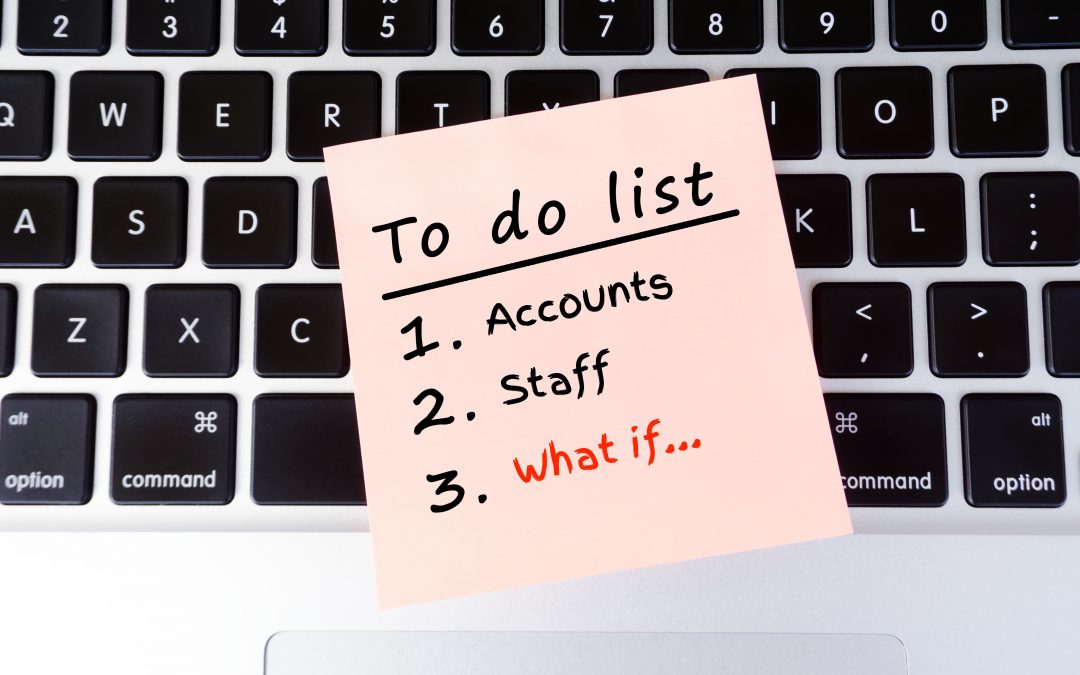I often refer to small and medium enterprises (SME’s) as the forgotten stakeholders when it comes to the before, during and after stages of disasters. But I think now is a good time to start really considering how and why we need to better engage with this sector.
Conversations I’m having are building in momentum within some State Governments regarding the role small businesses can and should play in disaster readiness, response and recovery – and for very good reason – because local SME’s are often the first responders and can be the greatest impacted.
We’ve touched on this statistic before, but it’s a good example of why small businesses should invest in readiness (including preparedness, prevention and mitigation):
A survey commissioned by US Office Depot a few years ago of 2,500 business owners found that 71% did not have a disaster plan in place, 64% said they didn’t need one and 63% were confident that they would be able to resume business within 72 hours of a natural disaster.
Of those businesses that experience a disaster and have no emergency plan, 43% never reopen, of those that do reopen, only 29% are still operating two years later.
So let’s think about this for a minute. Imagine if two years post a major flood in your community 71% of the businesses in your local area were gone. No hardware store, no post office, no hairdresser… Just think of the social and economic impacts to you, your family, your neigbours and your community as a whole.
The unfortunate reality is we need to drive a cultural change to start doing disasters differently. And we need SME’s to be a key focus of this change – but we need to show them how and tell them why.
So how do we create a culture of disaster resilient SME owners?
1. Support every business to create a WIIFM disaster plan relevant to their individual vulnerabilities, capabilities and needs.
As a small business owner myself, I don’t plan my day around what might happen to challenge my normal. But I’ve done enough research and spent enough time talking about disasters to really comprehend how essential having a disaster plan is – even if you think you’ll never need to use it.
Businesses that successfully recover from a disaster usually have a plan.
But the plan needs to be 100% relevant to you and your business – with a “what’s in it for me” focus – not a template checklist that’s more irrelevant than relevant to your situation.
In saying that, many State Government websites for small businesses offer great information to use as a base and I highly recommend them as a guide – but don’t assume that’s all you need to consider. Think bigger, think broader, think different.
2. Include “what if” on the monthly planning agenda.
Most of us have scheduled times to sit and do the accounts, plan the stock needed for the month ahead and schedule staffing rosters for upcoming shifts.
Imagine if answering a “what if” question became part of your business as usual routine, ie What if the heatwave expected next week causes power cuts due to air conditioning overuse… what does that mean for me? Can I keep trading? Whose generator can I use?
Problem “what if the power goes out” solved!
An effective “what if” plan can be created like a choose your own adventure book – with various scenarios that can have multiple outcomes (and consequences). I know how much I loved reading them and seeing what different endings I could create – and in many ways this is no different.
But make sure you include the good with the bad – what do you need to get prepared for (vulnerabilities), what do you have ready to go (capabilities) and what might you need (needs).
3. Make it fun through storytelling and scenarios.
Disaster planning + fun probably isn’t something you would expect to be in the same sentence… but if you gather your employees or connect with your neighbouring business owners to talk about what might happen and how you’d respond, I bet before you finish your tea and biscuits you’d most likely have the start of a plan ready to go!
Storytelling and thinking of potential scenarios of what might happen in your location to impact your business can be advantageous. And while you may come up with ideas considered so crazy “it’ll never happy to me” – in today’s world there’s a fair chance it might.
But the best part about collaborating to create your disaster readiness plan is that you’ll be creating connections. And if you’re connected with your team or peers before an impact, talking together about the “what if’s”, then you’ll know who you can call to help you get through when you need to.
Getting disaster planning on the agenda for SME owners isn’t new – but the hard part is making it important and relevant enough to be higher on the priority list.
There is much to be gained by being prepared in the event of a disaster – so let’s start helping SME’s add “what if” to their business as usual.
——–
Renae Hanvin is a thought leader in private sector contribution towards a disaster resilient future – providing strategic solutions to governments, businesses and communities on the before, during & after stages of impacts.
>> Economic Resilience
>> Social Resilience
>> Organisational Resilience
>> Community Resilience
>> Sector Resilience
To become a leader in building a disaster resilient future – visit www.corporate2community.com


Recent Comments